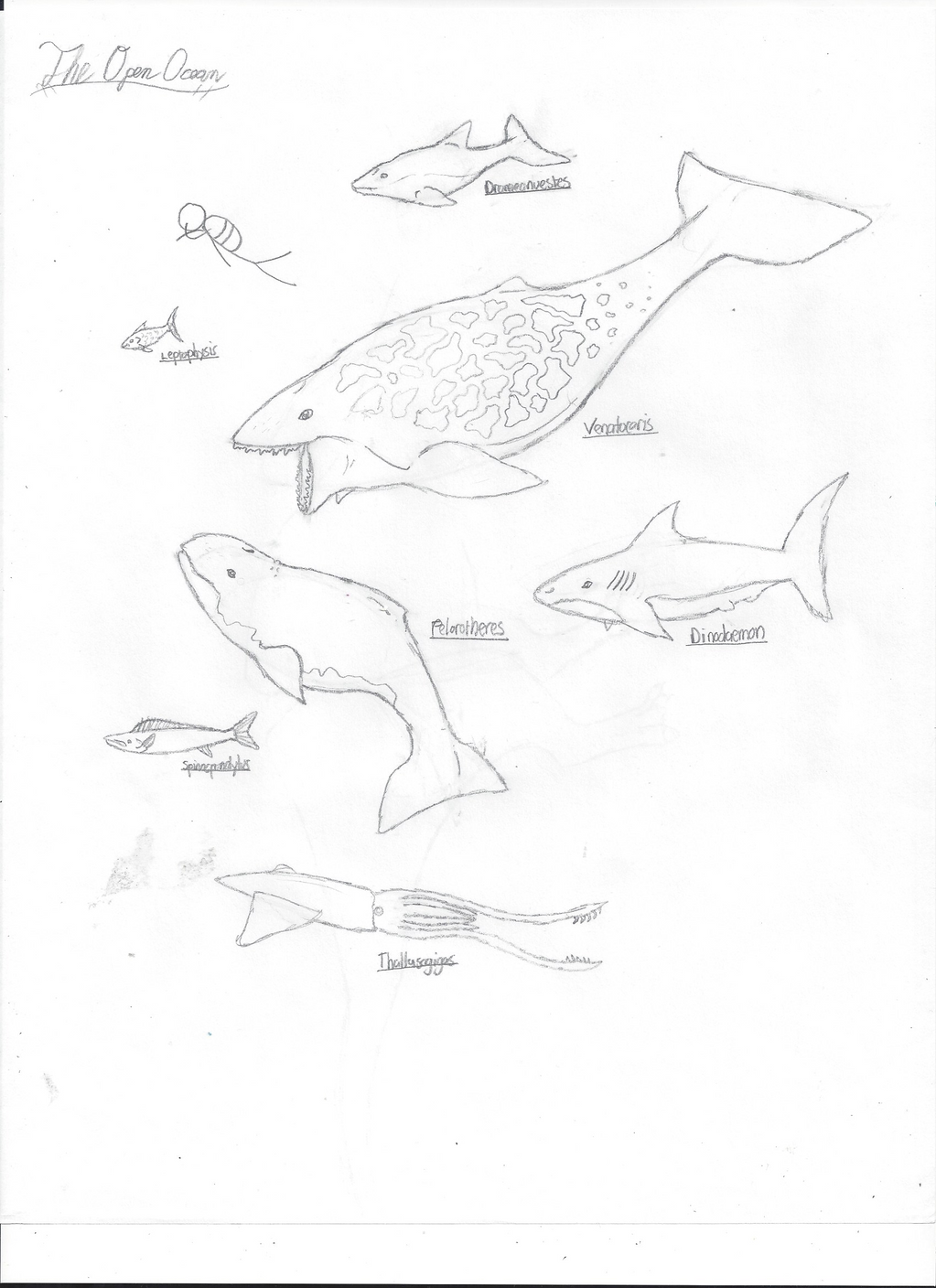HOME | DD
 awesomeelephant — The Open Ocean
awesomeelephant — The Open Ocean

#evolution #futureanimals #speculativeevolution #speculativebiology
Published: 2018-03-10 01:31:37 +0000 UTC; Views: 1150; Favourites: 15; Downloads: 0
Redirect to original
Description
Dromeonuestes - After the the extinction of the whales and dolphins, seals filled in the niche quite quickly. Becoming fully aquatic "wheals", they now dominate their new ocean habitat. This particular species speeds through the seas at speeds of up to 45 mph (72 kph) to catch the swift moving fish. Like many wheals they like to hunt in packs.Venatocaris - The largest of the wheals, the Venatocaris's teeth have fused into a tooth plate to help sift out the krill of the deep. Very few predators would tangle with one due to its shear size and menacing bite.
Pelorotheres - A mainly deep ocean inhabitant, Pelorotheres has a dependent relationship on the Thallasogigas. Although Pelorotheres does eat other organisms, squid is a mainstay of their diet.
Dinodaemon - The sharks have not changed too much from their present form. Much like the Carcharodon of today, Dinodaemon hunts marine animals from down below.
Thallasogigas - Thallasogigas not being the largest squid, is still impressive in size. Many Thallasogigas inflict terrible wounds upon the Pelorotheres that hunt them.
Leptophysis - Leptophysis sift out the plankton from the oceans surface waters and are the base of the food chain for the pelagic ecosystem. Many animals rely on their annual migration.
Spinospondylus - Nothing is too special about Spinospondylus except for their renowned speed. If Dromeonuestes aren't careful when hunting them, these fish could easily outpace them.
Map: Here

























